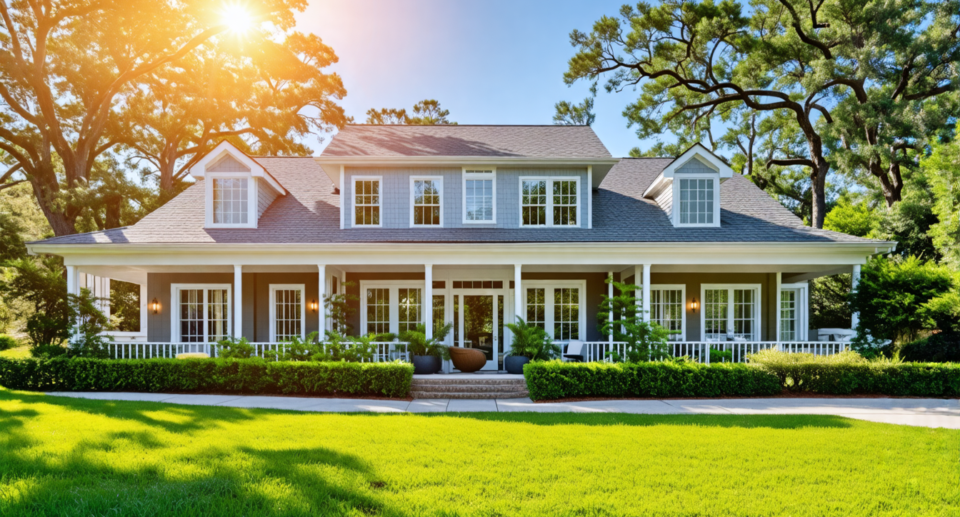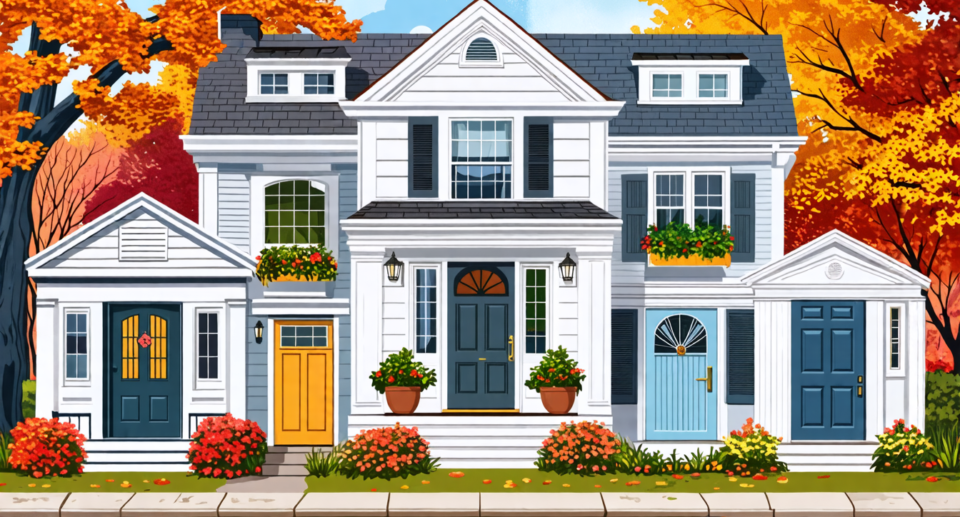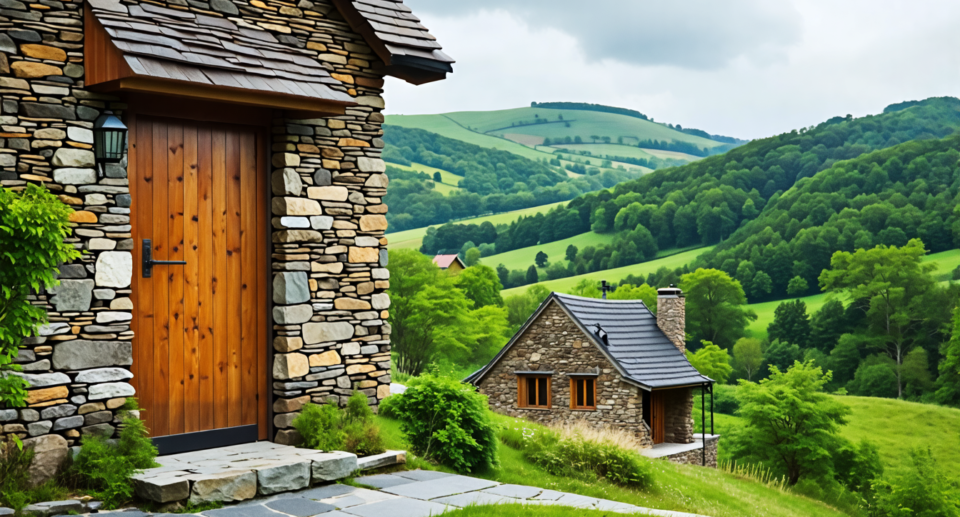How to Choose Energy-Efficient Windows for Southern U.S. Homes

Choosing energy-efficient windows for homes in the Southern U.S. involves careful consideration of both climate-specific needs and the available technology designed to enhance energy performance. Energy efficiency in windows refers to their ability to prevent heat from escaping in the winter and keep the heat outside in the summer.
This is particularly crucial in the Southern U.S., where hot and humid conditions can significantly impact household energy consumption. By investing in energy-efficient windows, homeowners can enjoy numerous benefits, such as reduced utility bills, improved indoor comfort, and a lower environmental footprint.
Understanding the specific climate considerations of the Southern U.S. is essential when selecting windows that offer optimal insulation and energy performance. The region’s high temperatures and humidity levels necessitate windows that can effectively minimize heat transfer and withstand intense sunlight.
Energy-efficient windows typically feature advanced insulation properties, including double glazing, low emissivity (Low-E) coatings, and gas fills, which enhance their thermal performance. Furthermore, choosing the right frame materials, such as vinyl, wood, or composites, contributes to the overall energy efficiency and durability of the windows.
When evaluating energy-efficient windows, it is important to consider key metrics such as the Solar Heat Gain Coefficient (SHGC) and U-factor ratings, which indicate how well a window can block heat and insulate, respectively. Opting for windows with low SHGC and U-factor ratings ensures that they can better manage solar heat and reduce cooling demands.
Selecting the right windows also involves choosing reputable brands and certifications like ENERGY STAR, which guarantee that the products meet high energy performance standards. Additionally, finding a reliable installer is crucial for ensuring that the windows are properly fitted and sealed, maximizing their energy-saving potential.
Homeowners should also consider the maintenance and durability of energy-efficient windows to ensure they provide long-term benefits and continue to perform effectively.
In summary, choosing energy-efficient windows for Southern U.S. homes involves a combination of understanding local climate needs, selecting windows with advanced insulation properties, and ensuring proper installation and maintenance.
By taking these factors into account, homeowners can significantly improve their energy savings, comfort, and environmental impact.
Understanding Energy Efficiency and Its Importance for Southern U.S. Homes
Definition of Energy Efficiency in Windows
Energy efficiency in windows refers to the ability of a window to prevent the transfer of heat between the inside and outside of a home. This is achieved through various technologies and materials that minimize the loss of warm air in the winter and cool air in the summer. The goal is to reduce the need for heating and cooling systems, thereby lowering energy consumption and utility bills.
Climate Considerations Specific to the Southern U.S.
The Southern U.S. is known for its hot and humid climate. In regions such as Texas, Florida, and Georgia, homes are exposed to high temperatures and intense sunlight for much of the year. This makes it essential to select windows that are designed to handle extreme heat.
The key to achieving this lies in understanding the specific climate challenges and selecting windows that can provide adequate insulation and protection against solar heat gain.
Southern U.S. homes require windows with low Solar Heat Gain Coefficient (SHGC) values. The SHGC measures how well a window can block heat from sunlight. The lower the SHGC, the less solar heat the window allows to enter your home.
Additionally, windows with low U-factor ratings are critical. The U-factor indicates the window’s insulating ability, with lower values representing better insulation.
Benefits of Energy-Efficient Windows: Cost Savings, Comfort, Environmental Impact
- Cost Savings: One of the most compelling reasons to invest in energy-efficient windows is the significant reduction in energy bills. By minimizing the amount of work your HVAC system has to do to maintain a comfortable indoor temperature, you can achieve substantial savings on your utility costs. Over time, the initial investment in high-quality, energy-efficient windows can pay for itself through these reduced expenses.
- Comfort: Energy-efficient windows can greatly enhance the comfort of your home. In the sweltering Southern U.S. heat, these windows help maintain a cooler indoor environment. They reduce drafts and improve the overall indoor air quality by maintaining a consistent temperature, which can also contribute to a healthier living space.
- Environmental Impact: Using less energy not only saves money but also reduces your carbon footprint. By decreasing the amount of energy your home requires for heating and cooling, you’re contributing to a reduction in greenhouse gas emissions. This makes energy-efficient windows a more environmentally responsible choice for homeowners who are looking to make a positive impact on the planet.
Recognizing the significance of energy efficiency, particularly in the Southern U.S., will help homeowners make informed decisions when selecting windows. By focusing on products designed to handle the region’s unique climate challenges, you can ensure that your home remains comfortable, economical, and environmentally friendly throughout the year.
Key Features to Look for in Energy-Efficient Windows
Insulation Properties: Double Glazing, Low-E Coatings, and Gas Fills
When selecting energy-efficient windows for Southern U.S. homes, insulation properties are paramount. One of the best ways to improve a window’s insulation capability is by opting for double glazing. Double glazed windows consist of two panes of glass separated by a spacer.
This design creates an insulating barrier that reduces heat transfer, significantly improving energy efficiency compared to single-paned windows.
Low-E (low-emissivity) coatings are another critical feature. These microscopically thin, transparent layers reflect heat while allowing light to pass through. In warm climates like the Southern U.S., Low-E coatings help keep heat out, reducing the need for air conditioning and lowering energy bills. They are indispensable for enhancing thermal performance without compromising natural light.
Gas fills represent another advanced insulation feature. The space between the panes in double or triple glazed windows can be filled with inert gases such as argon or krypton. These gases have better insulative properties than air, minimizing heat transfer. By choosing windows with gas fills, homeowners can leverage this cutting-edge technology to boost their home’s energy efficiency substantially.
Frame Materials: Vinyl, Wood, Composite Options
The material of the window frame can significantly influence overall energy efficiency. Vinyl frames are a popular choice due to their excellent thermal performance and cost-effectiveness. They are highly resistant to heat transfer, maintaining comfortable indoor temperatures. Moreover, vinyl is low-maintenance, making it a practical option for Southern U.S. homes, where weather conditions can be harsh.
Wood frames offer aesthetic appeal and commendable insulation capabilities. While they require more maintenance than vinyl, wood frames can be treated and painted to enhance durability and match specific home designs. Additionally, wood’s natural insulating properties make it an excellent choice for reducing energy loss.
For those looking for a blend of both aesthetics and performance, composite frames present an ideal solution. Made from a mix of materials like wood fibers and plastic, composite frames offer the insulation benefits of wood with the low-maintenance qualities of vinyl. They are resilient to extreme weather conditions and provide long-lasting thermal efficiency, a perfect combination for Southern U.S. climates.
Solar Heat Gain Coefficient (SHGC) and U-factor Ratings
Two vital metrics to understand when evaluating energy-efficient windows are the Solar Heat Gain Coefficient (SHGC) and U-factor ratings. SHGC measures how much solar radiation passes through a window. For Southern U.S. homes, aiming for windows with a lower SHGC is beneficial because it limits the solar heat entering the home, thus keeping indoor temperatures cooler and reducing air conditioning demands.
The U-factor, on the other hand, measures the rate of heat loss through a window. It indicates how well the window insulates. A lower U-factor signifies better insulation, essential for retaining the cool air generated by air conditioning during the sweltering Southern summers. By focusing on windows with optimal U-factor ratings, homeowners can ensure maximum energy retention and comfort.
When shopping for energy-efficient windows, it’s crucial to consider both SHGC and U-factor ratings to find windows that provide balanced performance. Since Southern U.S. homes need to maintain cooler interiors, low SHGC ratings combined with optimal U-factors are highly recommended. These ratings can usually be found on the window’s label and are instrumental in making informed decisions.
In summary, when choosing energy-efficient windows for homes in the Southern U.S., consider the insulation properties like double glazing, Low-E coatings, and gas fills. Evaluate the frame materials including vinyl, wood, or composite options.
Lastly, pay attention to key ratings such as the Solar Heat Gain Coefficient (SHGC) and U-factor to ensure you select the best windows for effective energy conservation and maximum comfort in your home.
Selecting the Right Windows and Installers
Choosing the right windows and installers is a critical step in ensuring maximum energy efficiency for homes in the Southern U.S. Given the region’s unique climate demands, homeowners must be diligent in selecting windows that offer optimal performance and longevity.
Here’s a comprehensive guide on evaluating window brands, choosing reliable installers, and understanding maintenance for long-term benefits.
Evaluating Different Window Brands and Certifications
When it comes to energy-efficient windows, not all brands are created equal. This is where ENERGY STAR certification becomes vital. ENERGY STAR certified windows meet stringent energy efficiency guidelines set by the U.S. Environmental Protection Agency. These windows are made to operate efficiently in specific climates, including the hot and humid conditions prevalent in the Southern U.S.
In addition to ENERGY STAR, consider other key certifications like the National Fenestration Rating Council (NFRC). NFRC labels provide detailed information about a window’s energy performance, including U-factor and Solar Heat Gain Coefficient (SHGC) ratings. These ratings help you understand how well a window will insulate and block heat from the sun – crucial factors for Southern homes.
While comparing brands, look for those that receive consistently positive reviews for their energy performance and durability. Names like Andersen, Marvin, and Pella are often highlighted for high-quality craftsmanship and effective energy-efficient features. Make sure to read user reviews and perhaps even ask for recommendations from neighbors or local contractors.
Tips for Choosing a Reliable Installer
Even the best windows will underperform if they are not installed correctly. Hence, selecting a reliable and skilled installer is as important as the window choice itself. Start by seeking installers who specialize in energy-efficient window installations. Expertise in this niche ensures that they are familiar with the best practices needed to maximize energy savings.
Next, check for certifications and affiliations with professional organizations like the American Window and Door Institute (AWDI) or the National Association of the Remodeling Industry (NARI). These certifications often indicate that the installer adheres to industry standards and best practices.
Additionally, always ask for multiple quotes to have a clear understanding of pricing and services. Be wary of quotes that seem unusually low as they might skimp on quality or expertise. Ensure that the installer provides a detailed contract specifying the scope of work, materials to be used, and the timeline for installation.
It’s also a good idea to check the installer’s references and previous work. Reviews and testimonials from past clients can give valuable insights into the installer’s reliability and quality of service. If possible, visit a site where they are currently working or have recently completed a job to inspect the craftsmanship firsthand.
Maintenance and Durability Considerations for Long-Term Performance
Lastly, understanding the maintenance needs and durability of your chosen windows helps in sustaining their energy-efficient properties over the long term. Different materials and technologies will have varying maintenance requirements.
For instance, vinyl windows are generally low-maintenance and don’t require painting or sealing. They are also resistant to humidity and UV damage, making them suitable for Southern climates. Wood windows offer excellent insulation but require regular sealing and painting to protect them from moisture and heat.
Composite windows, which combine materials like wood and vinyl, strike a balance between low maintenance and high durability.
Ensure you understand the cleaning procedures for glass coatings and gas-filled panes. Avoid harsh chemicals that could damage Low-E coatings, and make sure seals around the windows remain intact to prevent gas leakage over time.
Regular inspections are recommended to catch any potential issues early. Look out for signs of wear, such as drafts, fogging between panes, or difficulty in opening and closing the windows. Prompt repairs can prevent minor issues from escalating into costly fixes.
In conclusion, carefully selecting the right brands, working with certified installers, and committing to regular maintenance will ensure that your energy-efficient windows provide substantial cost savings, comfort, and environmental benefits for years to come.
In conclusion, selecting energy-efficient windows for homes in the Southern U.S. requires careful consideration of several key factors. Understanding what energy efficiency means for windows and its profound impact on cost savings, comfort, and environmental sustainability is the first step.
Given the unique climate characteristics of the Southern U.S., it is crucial to choose windows that mitigate heat gain and provide superior insulation.
When evaluating windows, homeowners should focus on crucial features such as insulation properties, including double glazing, Low-E coatings, and gas fills, which significantly enhance a window’s performance.
The choice of frame materials—be it vinyl, wood, or composite—also plays a vital role in the overall energy efficiency and aesthetics of the windows. Additionally, understanding the importance of Solar Heat Gain Coefficient (SHGC) and U-factor ratings can help select windows that offer the best thermal performance for the region.
Selecting the right windows is only part of the process. It is equally important to choose reputable window brands that carry certifications such as ENERGY STAR, which ensures the windows meet stringent energy efficiency standards.
Finding a reliable installer is paramount to ensure that the windows are fitted properly, maximizing their efficiency and longevity. Considering maintenance needs and the durability of the windows will also ensure they provide optimal performance over the long term.
By taking these comprehensive steps, homeowners in the Southern U.S. can make informed decisions that enhance their home’s energy efficiency, comfort, and sustainability, ultimately leading to significant cost savings and a reduced environmental footprint.

Hello, I’m Keith Jones. I’m the author and head of content here of door and window guide. I’ve been in the window and door industry for over 10 years in the UK and North America. I’ve had quite a few roles during my career mainly in Worldwide sales. I’m now semi retired so I thought I’d put my knowledge to good use educating people about all they might need to know about door and window related topics.








